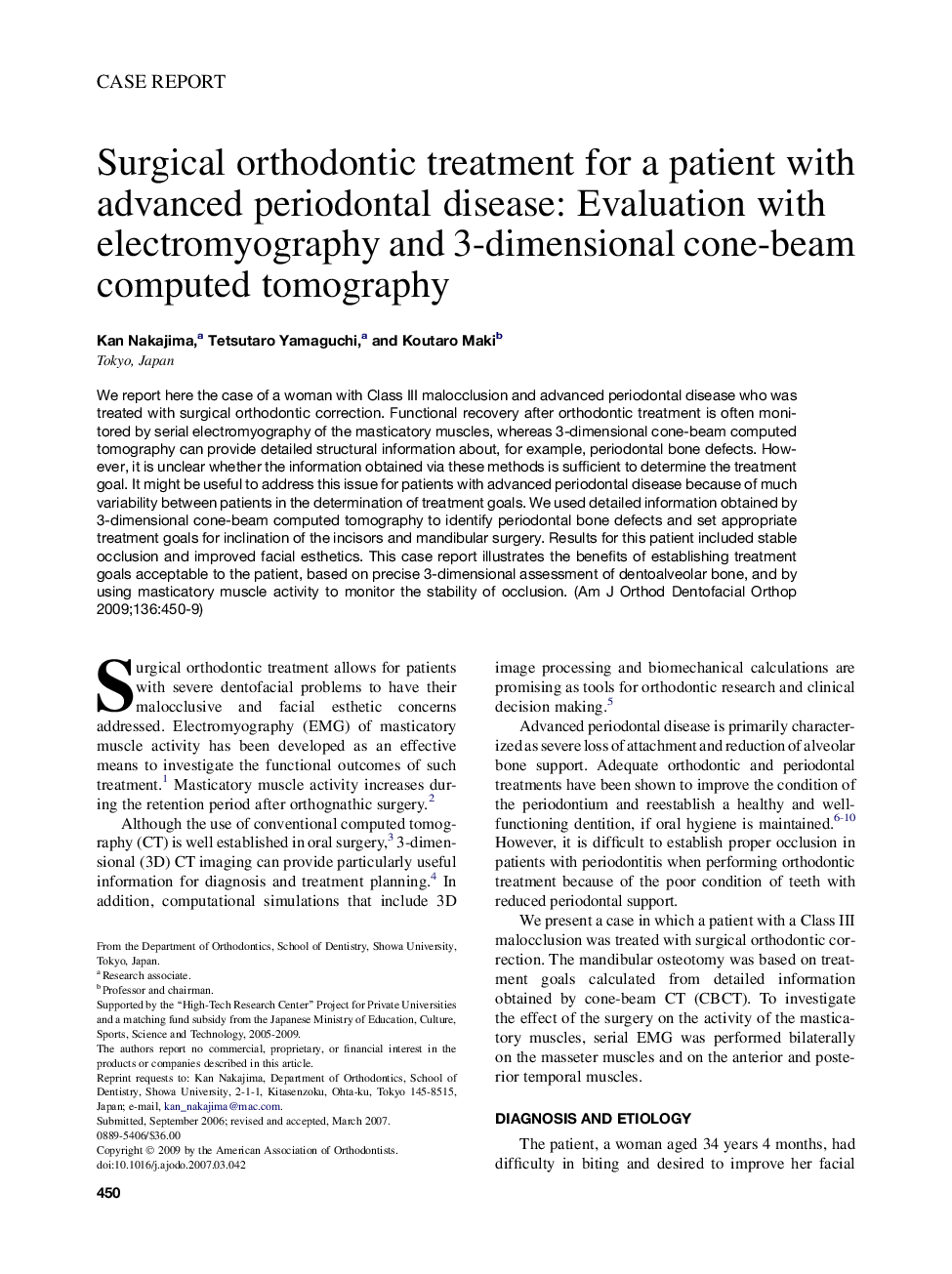| Article ID | Journal | Published Year | Pages | File Type |
|---|---|---|---|---|
| 3118692 | American Journal of Orthodontics and Dentofacial Orthopedics | 2009 | 10 Pages |
Abstract
We report here the case of a woman with Class III malocclusion and advanced periodontal disease who was treated with surgical orthodontic correction. Functional recovery after orthodontic treatment is often monitored by serial electromyography of the masticatory muscles, whereas 3-dimensional cone-beam computed tomography can provide detailed structural information about, for example, periodontal bone defects. However, it is unclear whether the information obtained via these methods is sufficient to determine the treatment goal. It might be useful to address this issue for patients with advanced periodontal disease because of much variability between patients in the determination of treatment goals. We used detailed information obtained by 3-dimensional cone-beam computed tomography to identify periodontal bone defects and set appropriate treatment goals for inclination of the incisors and mandibular surgery. Results for this patient included stable occlusion and improved facial esthetics. This case report illustrates the benefits of establishing treatment goals acceptable to the patient, based on precise 3-dimensional assessment of dentoalveolar bone, and by using masticatory muscle activity to monitor the stability of occlusion.
Related Topics
Health Sciences
Medicine and Dentistry
Dentistry, Oral Surgery and Medicine
Authors
Kan Nakajima, Tetsutaro Yamaguchi, Koutaro Maki,
